-
History & Society
- Education in Pre-war Hong Kong
- History of Taikoo Sugar Refinery
- Hong Kong Products Exhibition
- Local Festivals Around the Year
- Post-war Industries
- Pre-war Industry
- The Hong Kong Jockey Club Archives
- Tin Hau Festival
- Memories We Share: Hong Kong in the 1960s and 1970s
- History in Miniature: The 150th Anniversary of Stamp Issuance in Hong Kong
- A Partnership with the People: KAAA and Post-war Agricultural Hong Kong
- The Oral Legacies (I) - Intangible Cultural Heritage of Hong Kong
- Hong Kong Currency
- Hong Kong, Benevolent City: Tung Wah and the Growth of Chinese Communities
- The Oral Legacies Series II: the Representative List of the Intangible Cultural Heritage of Hong Kong
- Braving the Storm: Hong Kong under Japanese Occupation
- A Century of Fashion: Hong Kong Cheongsam Story
Geography & EnvironmentArt & Culture- Calendar Posters of Kwan Wai-nung
- Festival of Hong Kong
- Ho Sau: Poetic Photography of Daily Life
- Hong Kong Cemetery
- Sketches by Kong Kai-ming
- The Culture of Bamboo Scaffolding
- The Legend of Silk and Wood: A Hong Kong Qin Story
- Journeys of Leung Ping Kwan
- From Soya Bean Milk To Pu'er Tea
- Applauding Hong Kong Pop Legend: Roman Tam
- 他 FASHION 傳奇 EDDIE LAU 她 IMAGE 百變 劉培基
- A Eulogy of Hong Kong Landscape in Painting: The Art of Huang Bore
- Imprint of the Heart: Artistic Journey of Huang Xinbo
- Porcelain and Painting
- A Voice for the Ages, a Master of his Art – A Tribute to Lam Kar Sing
- Memories of Renowned Lyricist: Richard Lam Chun Keung's Manuscripts
- Seal Carving in Lingnan
- Literary Giant - Jin Yong and Louis Cha
-
History & SocietyGeography & EnvironmentArt & Culture
-
View Oral History RecordsFeatured StoriesAbout Hong Kong Voices
-
Hong Kong Memory
- Collection
- All Items
- Oral History
Recently VisitedOral History
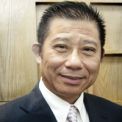
- The origins and setting up of Dailywin
The origins and setting up of Dailywin. Leung Wai Ho thanked his uncle for giving him the opportunity to develop and learn about overseas marketing. When Leung Wai Ho later got married and had his own family to support, he was not content with his remuneration at Leung Lung Kee. Cheered by his customers’ encouragement, he conceived the idea of starting his own business and founded Dailywin in 1978. When he opened his first factory, Leung Wai Ho’s savings only numbered a few tens of thousands of dollars. He borrowed a further $200,000 from friends as capital and rented a 5,000-square foot half-floor plant from Join-In Shirt on Kwai Ting Road in Kwai Chung. He later admitted that the start up was a bold attempt. In the early days, Leung Wai Ho hired relatives as workers. As Dailywin’s customers were willing to pay quickly for their orders and suppliers generously allowed credit payments, business got off to a smooth start.
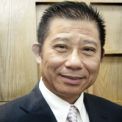
- The expansion of Dailywin in the mid-1980s
Between 1981 and 1982, Dailywin’s business volume constantly increased. Leung Wai Ho worked 12 hours a day in the 1960s and often worked from 8:00 am to 9:00 pm after starting his company. During the day, he looked after the factory operation. At night, he liaised with North American customers via telex. Dailywin initially produced the cases which dictated each watch’s appearance. This work had a high profit margin and most of the company’s customers were in North America. In 1983, a US customer commissioned Leung Wai Ho to assemble complete watches with movements provided by the customer himself. As a result, Dailywin’s business model began moving towards one-stop production. In the late 1970s, Dailywin co-operated with top US watch manufacturer Timex and began producing specialty cases for Timex. The company also looked for other manufacturers, acting as intermediary for referring orders to local watch factories such as Nam Keen and Rainbow. In 1983, Leung Wai Ho eventually bought shares in both of these companies despite their being much larger than Dailywin. The three parties then set up an electroplating factory in 1984 so as to better control quality. The fact that the electroplating factory was located immediately above Dailywin’s plant saved a lot of processing costs.
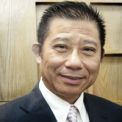
- Engaging in overseas sales business in the late 1980s
With the issue of the UK’s 1997 handover of Hong Kong to China still to be resolved, 1983 was a year of political instability for the Territory. Leung Wai Ho’s family emigrated to Montreal in Canada in 1984. As Montreal was close to New York, it was a convenient base from which to contact Dailywin’s US customers. The fact that the city was located in Canada’s French-speaking zone also helped Leung Wai Ho’s children learn French. Leung Wai Ho bought the SAGA brand in Canada and given it a Chinese name. From 1986, he focused on promoting the brand’s sales in Canada. As he could not oversee the business on the spot and North America’s vast population and landmass made advertising and marketing very expensive, the venture eventually came to an end. Leung Wai Ho retained his faith that Hong Kong was the ideal place for developing a retail business. Learning from his failure in North America, Dailywin began expanding its retail operations in mainland China with effect from 1992 onwards.
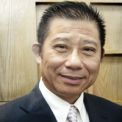
- Background and planning of setting up a factory in China
The 1980s were probably the peak period for Hong Kong industries. Towards the end of the decade, there was a shortage of both local factories and workers. Rapidly increasing labour costs further added to the Territory’s lack of competitiveness. Reforms and the opening up of China meant Hong Kong manufacturers were keen to start investing on the mainland. Local companies had been gradually moving northward in the mid-1980s, mainly concentrating their operations in places like Shenzhen and Dongguan. As many factory managers originally came from the mainland before settling in Hong Kong, most preferred to set up factories in or near their hometowns. As Leung Wai Ho was born in Hong Kong, this was not an issue.
During a study tour to Shenzhen in 1988, Leung Wai Ho and his friends found that many places in and around the area were barren and would need to be self-developed. Leung Wai Ho originally paid the deposit to secure a site in Shenzhen’s Longgang District, finally giving up after he worked out that the cost of continued development would be too high. He later chose a roadside lot in Dongguan, as it would be easier to develop and was near Hong Kong. Local policies in Dongguan also facilitated the setting up of manufacturing facilities and charges there were more reasonable than in Shenzhen. The Longgang District eventually developed satisfactorily and Leung Wai Ho later regretted that he had given up the idea of setting up a factory there.
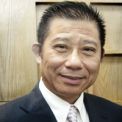
- Employees at the mainland plant
Dailywin’s Dongguan plant hired Hong Kong managers to take charge during its initial start up and hired general workers in China. During its peak period, the factory had 25 staff members from Hong Kong stationed in the mainland where they managed and trained up local personnel. Today, just four staff members from Hong Kong are stationed in China. At first, mainland workers were mostly junior high school graduates. So much so that Dailywin once asked a middle school in Qingyuan to select its best graduates to work in its local factory. As Dailywin’s plant had better facilities, workers coming from the countryside were generally very satisfied with its boarding arrangements. Leung Wai Ho was quite lenient about academic requirements for mainland technical staff. In recent years, positions such as production processes and material management were filled by mainland university graduates. From 1993 onwards, Dailywin set up annual scholarships at the Dongguan University of Technology to attract students to join it after graduation. At present, six awardees are employed and hold senior positions in this way.
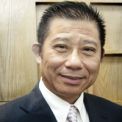
- The rise and fall of sales business in Mainland China
In 1992, Leung Wai Ho accompanied a party from the Hong Kong Trade Development Council to the mainland to promote retailing. While there, he secured sales space in Guangzhou’s Nan Fang Building which had roughly the same status as Hong Kong’s Shui Hing and Sincere department stores. Leung Wai Ho subsequently rented a shop in Guangzhou’s Shangxiajiu Road, opening a flagship store to promote SAGA watches. Having many years of production and sales experience, believing there was a huge potential market in China, and serving as Vice President of the CHA, Leung Wai Ho had every confidence he would be successful in applying for his sales quotas. As a result, he worked hard to promote his mainland retailing activities.
Dailywin spent a full year trying to raise funds to develop its domestic sales in China and listed itself on the London Stock Exchange in 1995. It subsequently used all funds raised to expand the Dongguan factory operation. In those days, the UK market had a lower listing threshold, while the Hong Kong Stock Exchange did not welcome small companies capable of earning less than $50,000,000 within three years.
Dailywin’s China domestic sales team began by focusing on consignments to shopping malls with all selling conducted through wholesalers. As Leung Wai Ho was not familiar with the mainland market and lacked experience in retailing, wholesalers often took the goods and defaulted on payment. This cost him considerably in terms of both goods and money. Between 1994 and the end of 1996, Leung Wai Ho lost a total of $50,000,000 in this way. After this failure, Dailywin was listed in Hong Kong in 1997 to raise funds for a comeback. From 1997 onwards, Leung Wai Ho directly managed the company’s mainland retail stores, using a “shop-in-shop” mode to open 25 shops in big cities across China. Leung Wai Ho was well aware that as a manufacturer he lacked retailing experience, and therefore hired full-time sales managers to run the shops. One of the managers he employed had previously worked in Giordano. Leung Wai Ho rented spaces of 20 to 40 square metres in each large shopping mall. He also co-operated with foreign brands such as Timex, Casio, Disney, Elle and Esprit to market lifestyle watch brands. Labelled Time Zones, these retail corners collected and analysed sales information on a daily basis. Leung Wai Ho admitted that the Guangzhou flagship store was not suitable for selling brand watches and that he had chosen the wrong location.
Leung Wai Ho claimed that his attempt to enter retailing was a “money burning” business that had cost him around $200 million between 1997 and 2003. Sadly, profits earned from overseas’ businesses were insufficient for him to “burn money” in China at such rates. In 2003, Dailywin’s retail stores in China hit a peak of 450, with goods on display having a total value of over $90 million and some 2,000 staff running shop operations and warehousing. Not knowing when returns would materialise and lacking the financial muscle to sustain heavy losses for much longer, Leung Wai Ho finally sold the retail business in 2003. The buyer was a large locally listed watch manufacturer called Peacemark.
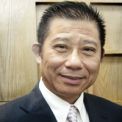
- Dailywin’s reduced reliance on its Hong Kong plant after relocation
In 1992/93, almost the whole of Dailywin’s plant was relocated to China, with only the design and marketing departments remaining in Hong Kong. As inconvenient communications between the two places often lead to information errors, Dailywin subsequently relocated the two remaining departments to China in 1997. Ultimately, only the accounting and shipping departments and just 12 staff were left in Hong Kong. The Dongguan factory officially became operational by the end of 1989 and Hong Kong plant’s watch case department was the first area to move northward.
After the first phase relocation was running smoothly, Leung Wai Ho believed China’s domestic market outlook was good and started expanding his mainland manufacturing operations again in 1992. Hong Kong plant’s watch fitting department was subsequently moved to China in 1993. In 1989, Dailywin Hong Kong laid off about 200 workers, while the Dongguan plant hired 350 staff. In 1993, the local plant made a further 150 workers redundant, while it added an additional 300-350 workers on the mainland. Happily, Hong Kong plant’s severance program ran smoothly. At its 1996 to 1997 peak, Dailywin Dongguan employed around 1,600 to 1,700 workers. Together with a retail workforce of 1,600 across the country, this meant the Dailywin Group employed roughly 3,200 people.
Copyright © 2012 Hong Kong Memory. All rights reserved.
| Set Name |





